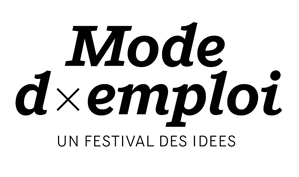Fabio Parasecoli - Food, migrants, and the making of traditions
![[title-image]1332154763790[/title-image] Parasecoli Fabio - Droits réservés](https://cle.ens-lyon.fr/anglais/images/9c8d8bd829_1448895253599-jpg)
Fabio Parasecoli is a professor and director of food studies projects at the New School of New York. After first turning to political science, he chose to study societies and political systems through food, which, according to him, transmits traditions, interpretations, societal aspects, and a perspective on the rest of the world.
Food is more than just physical sustenance: it produces meaning and sense, creating infinite culinary cultures where every ingredient, each dish, and meal structures are connected. These cultures are influenced not only by the past, interpreted and practiced as tradition, but also by new occurrences resulting from both internal transformations and the incorporation of external elements. As a result, meanings attributed to food are never completely defined once and for all but are endlessly negotiated and renovated through practices, discourse, and representations. However, despite constant changes, food cultures present an internal coherence, which provides parameters defining behaviors and objects as acceptable or deviant, and marking individuals insiders and outsiders.
These dynamics are particular important for immigrants, who can cope with the dislocation and disorientation they experience by recreating a sense of place around food production, preparation, and consumption. Certain food-related objects, behaviors, norms, and values from their areas of origin are maintained, more or less transformed, to become important points of reference in the formation of a sense of community. Some instead disappear, while others resurface after periods of invisibility.
While easing the anxieties caused by the constant and invasive exposure to their new environments, communal practices such as food preparation, shopping, and celebratory meals strengthen migrants’ identity. However, specific ingredients, dishes, and practices can become sources of emotional ambivalence. As comfort food, they connect migrants to their past; at the same time, their consumption mark them as outsiders in the host society. As important for the cultural reproduction of social life as they may be, such foods frequently undergo various degrees of transformation due to the availability of ingredients, the exposure to different flavors and techniques, and the need to adapt to a dissimilar rhythm of life. These negotiations, where the participants often do not enjoy the same positions in terms of power and privilege, constantly shape and reshape customs and traditions within the migrant community.
The table can be a safe place, but tensions and contrasts are always lurking. Due to gender, age, or occupation, some migrants might find themselves exposed only to limited and filtered contact with the host community, in which case the communal aspects of their experience are particularly relevant. Women are likely to be in charge of cultural reproduction through food, trying to meet expectations that certain dishes and meals maintain similarities with preexisting customs. However, they may also be the ones who engage more intensely with consumer cultures proposing foreign products, shopping modalities, eateries, and festivities, whose values and significance are interpreted through media, medical discourses, education, and labor relations. As a consequence, women can assume a variety of positions in a spectrum that goes from the staunchest defense of what they perceive as traditions to the enthusiastic embrace of culinary elements from the host community, which in turn entails further negotiations with other family members who may assume different approaches regarding the nature and relevance of food traditions.
These multilayered dynamics, embedded in constantly shifting situations, illustrate how food may be invested with great emotional significance and passionately embraced by all actors involved. Ingredients, dishes, and practices have the potential to become cultural markers that identify and rally individuals and communities, causing fierce attachment to food traditions. Even when the narratives about the origins of food tradition can be proved as historically unfounded, norms, attitudes, and values connected to them are not artificial and dispensable. From an emotional and existential point of view, it does not make any difference whether traditions are “invented,” that is to say born out of new contexts in the present but referring to old situations from the past. As a result, the notion of “authenticity” is contextual, constructed, and always mutating.
The rediscovery and the modernization of forgotten objects and practices can also take place through their transformation into heritage, which—as performance theorist Barbara Kirshemblatt- Gimblett aptly argued—“is a mode of cultural production in the present that has recourse to the past”. Solidly rooted in modernity and in the global flows of goods, ideas, practices, capital, and people, the establishment of food heritage and traditions plays an important role for the imagination and the cultural capital of migrants, not to mention for their economic success as producers of appreciated consumer goods.
The identification and reproduction of foodways constitute a crucial component in the emergence and operation of migrant communities. Food establishes boundaries and secures stability through submission to practices, expectations and rules that, although experienced as traditions, constantly shift and evolve with the community itself.
Cette ressource est publiée dans le cadre de la quatrième saison du festival "Mode d'Emploi", organisé par la Villa Gillet en novembre 2015.
Pour citer cette ressource :
Fabio Parasecoli, Fabio Parasecoli - Food, migrants, and the making of traditions, La Clé des Langues [en ligne], Lyon, ENS de LYON/DGESCO (ISSN 2107-7029), novembre 2015. Consulté le 29/12/2025. URL: https://cle.ens-lyon.fr/anglais/litterature/entretiens-et-textes-inedits/fabio-parasecoli-food-migrants-and-the-making-of-traditions



 Activer le mode zen
Activer le mode zen
 Du 16 au 29 novembre, penseurs, chercheurs, décideurs, entrepreneurs, acteurs de la vie publique et artistes iront à la rencontre du public, à Lyon, Saint-Etienne, Chambéry ou Grenoble, pour nous inviter à interroger le monde d’aujourd’hui en replaçant les sciences humaines au cœur du débat citoyen.
Du 16 au 29 novembre, penseurs, chercheurs, décideurs, entrepreneurs, acteurs de la vie publique et artistes iront à la rencontre du public, à Lyon, Saint-Etienne, Chambéry ou Grenoble, pour nous inviter à interroger le monde d’aujourd’hui en replaçant les sciences humaines au cœur du débat citoyen.